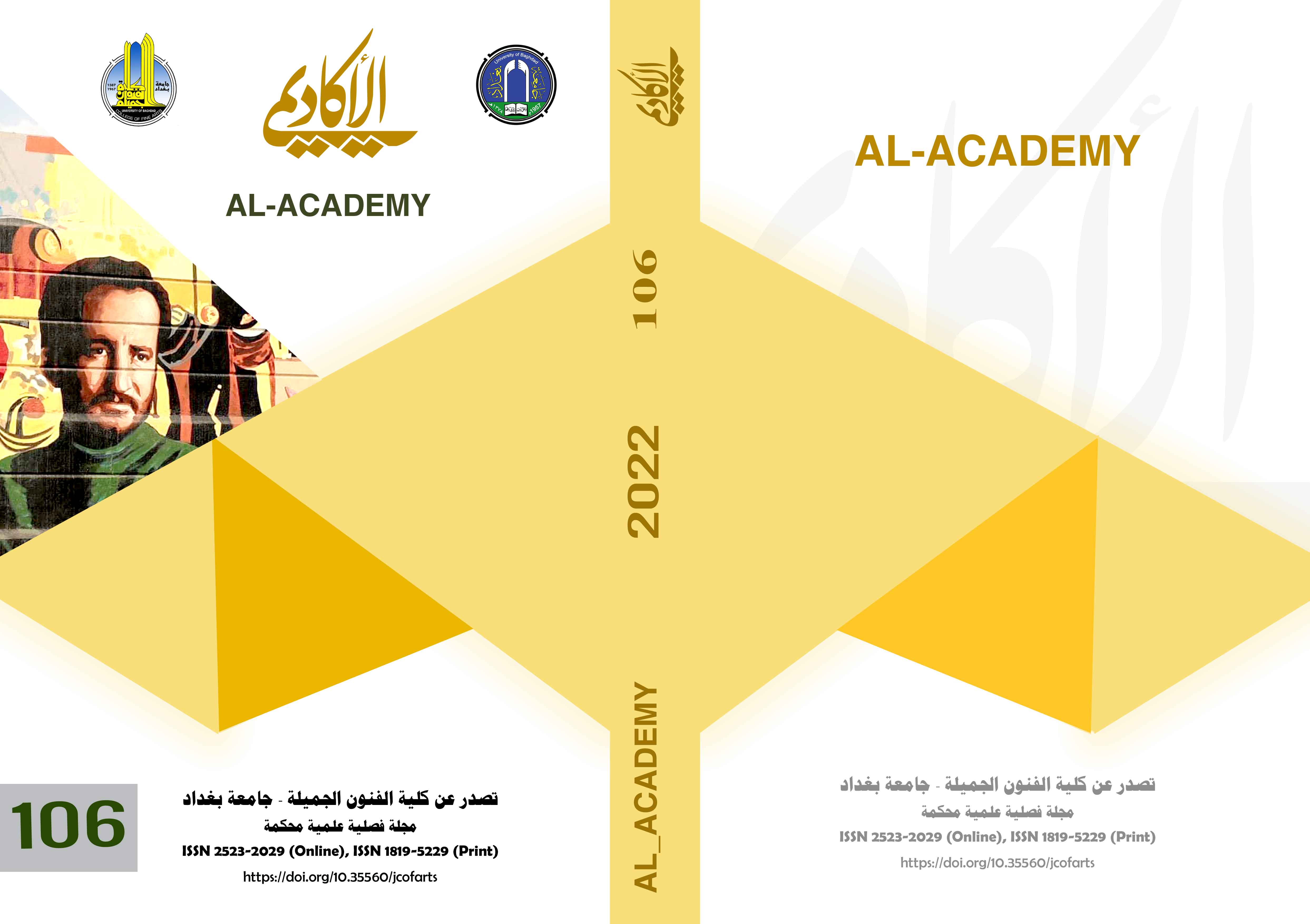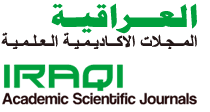The image of the soldier in contemporary Iraqi painting
DOI:
https://doi.org/10.35560/jcofarts106/187-204Keywords:
The image of the soldier, contemporary Iraqi paintingAbstract
The research tagged (the image of the soldier in contemporary Iraqi painting) dealt with the concept of the image as one of the basic concepts in the creative achievement, whether it is in the field of art, literature or beauty. Therefore, the concept of the image expanded to express the various aspects of human creativity, including the field of painting. To know the image of the soldier in contemporary Iraqi painting, the research included four chapters. The first chapter focused on the methodological framework of the research, while the second chapter included three sections. The first topic dealt with the philosophical and artistic concept of the image. The second topic was concerned with the representations of the soldier's image in modern painting, while the third topic dealt with the characteristics of the soldier's image in Iraqi painting.
The third chapter was devoted to research procedures. In order to achieve the goal of the research, a number of results were reached in the fourth chapter, including:
1- The imaginary image of the soldier appeared through a visual scene that combined different times and places in one space, as Alaa Bashir relied on the combination of the two aerial perspectives (or the so-called bird’s eye), and the ground according to metaphysical philosophy, which aims to transform the world and things into imaginary visions. Where the idea transcends the reality. (model 1)
2- The realistic sensory image of the soldier was shown by the colors and their poetic effects on the influences and suggestive codes carried by the color, and the depth of the spirit of originality mixed with heritage, which makes us feel belonging, authenticity and national identity, defined by the priorities of the sensible and what is aesthetically perceived. (Model 2)
1- The figurative image is one of the images that arise in the art of painting, and it witnesses an intense presence in the context of the significance of the image and the referral to a mental conception through concepts abstracted from its sensory image.
2- The imaginary image in art witnesses a moral dimension regarding the mind’s retrieval of things abroad, and building them in a way that reveals new relationships that were not realized before.
3- According to mental images, images are manifested in art within the limits of the work of knowledge and mental awareness. Images are formed when the mind is the repository, as the analyzer and compound of the meanings of things outside.
4- The sensory image in art works on dismantling reality by relying on simulation, as imagination works in it to depict the moral abstract in a sensual way, relying on experience as a source of all knowledge and its domain is the mind
References
AL dahiat, E. (2007). Western Cash from Platon to Pacashio. Jordan: AL Fares publishing and Distribution.
AL- Feki, O. (2013). Thinking of color, ahundred selected paintings. Egypt: The Anglo Egyptio Bookshop.
AL Jabir, N. (1990). The story of faith between philosophy, Science and the Koran. trably, Lebanon.
AL-Agha, W. (2007). Abstract reaalism in art. Beirut, Lebanon,: The Arab institute for studies and publishing,.
AL-AKKad, A. M. (n.d.). reviews in literature and the arts. Beirut Lebanon: House of Knowledge.
AL-FeKi, O. (2003). Atour of the art history and oil painting. Egypt: the Anglo Angyptian Bookshop.
AL-Nasiri, R. (2005). perspectives and articles on plastic art. Amman, Jordan: Dar AL-Fares.
AL-Rubaie, s. (1985). contemporay plastic art in the Arab world. AL-sharqah .
Blasim Muhammad. (2017). Isolation of art in Iraqi Culture,. Baghdad,: Iraqi plastic Artists Association,.
Emara, M. F. (2013). Islamic media and Future challenges. Cairo: AL Shorouk International Library.
Friedrich, J. (2021). horses. Abu Dhabi: House of culture and tourism.
hamid, S. A. (1970). Creative process photography. Kuwait: Knowledge Worid series.
Hassan, R. M. (2014). Composition of war scenes between Guernica. painting and Assyrian bas-relief. Al- academy Magazin,Number 67, college of fine Arts, University of Baghdad, p. 42.
Hassan, S. J. (2017). The structural transformation of the installation systems in theork of the artist Ali Al-Najjar. . Al- academy Magazin,Number83, college of fine Arts, University of Baghdad, p. 41.
Maha Talib Makki. (2011). Expressionism in the drawings of the artist( Carl Schmidt Rottloff)and (Rasoul Alwan). Al- academy Magazin,Number 61, college of fine Arts, University of Baghdad, pp. 55-56.
Masarwa, N. (2008). poetry, reality, fantasy, meanings and artwork(until The twelf th century AD,Review. House of scientific Books.
Moataz Enad Ghazwan. (2007). Cultural ports and Readings in plastic art and Design,. Amman: Majdi House for publishing.
Muti, F. A. (1992). Aresto professor of philosophy of Greece. Beirut Lebanon: scientific Books.
Rahman, K. E. (2015). The confusion of plastic art between roots and aliention. Amman Jordan: Amouage for publication and distribution.
Saleh, I. N. (2014). Intellectual contents in Realistic plastic works( paintings of Iranian Artist Ayman Al -Maliki). Al- academy Magazin,Number 69, college of fine Arts, University of Baghdad, p. 45.
Tawfiq, S. (2018). Interpretation of Art and Religion.
Youssef, M. A. (2016). contemporary sculpture vision and concept. Al- academy Magazin,Number 73, college of fine Arts, University of Baghdad, p. 33.
Downloads
Published
Issue
Section
License
Copyright (c) 2022 Sahib Jassim Hassan Al Bayati, Safaa Salah Rashid

This work is licensed under a Creative Commons Attribution 4.0 International License.













